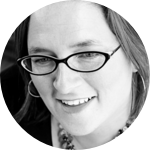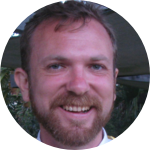About This Project
Current monitoring of the waters feeding Biscayne Bay are insufficient. There are 20+ basins that flow into the bay which are being monitored monthly for nitrogen and phosphorus which cause persistent algal blooms. Two basins effecting seagrass loss will be targeted in this project, Little River and the Biscayne Canal. The goal is to expand the sensing network in an effort to help drive research, local decision making, and community action. All data will become open source.
Ask the Scientists
Join The DiscussionWhat is the context of this research?
The August 2020 Fish kill hit Biscayne Bay, killing thousands of fish and hitting the ecosystem hard. I wanted to dig deeper but the data was insufficient.
We have known that nutrient pollution is slowly killing the bay since the 1970's. Today water quality testing is also in the 1970's, with monthly water quality tests of a dynamic system which sees changes every tide and rainfall event.
This consistent level of nutrient pollution has led to persistent algal blooms causing extreme seagrass die offs in Biscayne Bay.
New low cost sensor technology is making continual monitoring possible. These sensors allow the community to gain a deeper understanding of the current situation and direct action.
What is the significance of this project?
This project would be the first continual monitoring system of nutrient pollution and water quality measures for the waters entering Biscayne Bay. Continual monitoring creates a much more accurate data for a system where water moves continually especially with every tide and rainfall event.
This level of data is significant because it will help guide new research, social, and governmental action.
Currently, FIU has 4 sensors that test water quality continuously mainly focused on the bay itself. Adding more sensors to this network will give data to support the dynamic nature of the bay and its inflowing waterways.
These low cost sensors can dramatically increase the size of the network at 5-10% the traditional costs.
What are the goals of the project?
Our goal is to add a minimum of 3 sensors to the Little River & Biscayne Canals to test water entering the Bay. Our stretch goal is to fund 10 sensors. The sensors will measure a range of items: dissolved oxygen, temperature, turbidity and salinity. Select sensors will measure nitrogen, phosphorus, and/or Chlorophyll A.
This project will generate new streams of open data for citizens, communities, government, and scientists to more deeply understand the specific issues affecting the Bay.
This supports line 1B of the Biscayne Bay Task Force Report, which states: Develop, implement and continuously monitor and demonstrate progress toward meeting 1A’s pollutant load reduction goals and interim targets for surface and groundwater and linked biological recovery.
Budget
Each low-cost open source sensor will initially cost between $500-900 depending on the exact sensors that are most suited to the site. This equipment along with the FieldKit app will aggregate all the data online making it easily accessible.
Currently Tropical Rivers Lab @ FIU is using this equipment for sensing in remote parts of South America.
The sensors need to be cared for and particular sensors will need to be replaced. Nitrogen sensors in particular last 3-6 months, keeping this sensor in working order is key to a steady data flow.
Community engagement and education is key to the long-term success of this project. Connecting to the sensors with their smartphones, individuals can upload the data to the online database.
Every $1500 above target funding adds one additional sensor to the network. The long-term goal of the project is to add at 5 sensors to each waterway.
Endorsed by
 Project Timeline
Project Timeline
This project will move quickly once the sensors are received, building community relationships will be key to keeping data current online. The Little River Conservancy plans to leverage existing community partnerships along the River, including The Oakland Grove Neighborhood Association, The Little Haiti NET, The Sierra Club, The Upper Eastside Neighborhood Association, and Pelican Harbor Seabird Station to drive engagement with this project.
Jan 06, 2021
Project Launched
Jan 12, 2021
Project Launched
Mar 13, 2021
Network with community stakeholders
Apr 17, 2021
Educate and train community groups and individuals about how to link to individual sensors through FieldKit App to the public database
Apr 30, 2021
Place sensors at select sites
Meet the Team
Team Bio
The Little River Conservancy is a 501(c)3 organization founded by residents of the Little River and the surrounding communities. It serves as both an educational organization, and an umbrella organization to connect the many communities and agencies that are involved with the long term health and stewardship of the Little River and watershed. It focuses on three areas of work: water quality improvement, the reduction of floating solid waste, and community education and access.
Kristen McLean
Kristen McLean is one of the founders of The Little River Conservancy. She has resided in the Village of El Portal since 2014. She is passionate about networking a wide range of community partners on environmental and educational issues related to the Little River, the surrounding communities, and the marine health of Biscayne Bay. When she is not working on the El Portal Resiliency and Sustainability Task Force (RSTF), or the Little River Conservancy, she holds down her day job as the Executive Director of Business Development/Primary Industry Analyst for Books and Entertainment at The NPD Group, a global research company. She lives with her husband Russell, her kid, and her cats and dogs on the north bank of the Little River in west El Portal.
Adam Old
Adam Old is the Director of Planning & Policy at Omni Community Redevelopment Agency, where he oversees the planning and policy for the development of housing affordability, economic development, and historic preservation. He is an advocate for walkable neighborhoods, connected transit, better cities, and the preservation and repair of natural ecosystems in Miami and South Florida. He also lives on the north bank of the Little River in the heart of El Portal.
Project Backers
- 110Backers
- 131%Funded
- $5,935Total Donations
- $53.95Average Donation


